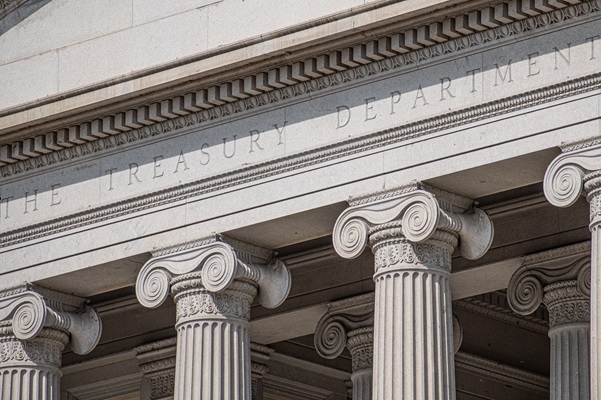.png)
Yield Scribe is a bond trader with a macro lens and a habit of writing between trades. He follows cycles, rates, and the long arc of monetary intent.
November 24, 2025 at 8:09 AM IST
The US Treasury did not release data from the Treasury International Capital system in October due to the government shutdown. Instead, it released data for two months — August and September — this week. Foreign demand for US Treasuries remained moderate, with overall foreign holdings of long-term Treasuries rising by $6.2 billion in August and $26.3 billion in September. However, the combined increase of $32.5 billion was significantly lower than the $121 billion recorded over the same two-month period in 2024.
But these headline numbers still don’t tell the full story. Foreign private investors increased their long-term US Treasury holdings by a combined $43.7 billion over the two months, while foreign officials sold $12.1 billion in August and purchased $1 billion in September. This continues a yearlong trend of official-sector selling. Year to date, foreign officials have sold about $72.8 billion of long-term Treasuries, and there is little sign that official demand will rebound.
This brings the year-to-date total of foreign private investor purchases of long-term Treasuries to $349 billion — significantly lower than the $544 billion recorded in the first nine months of last year.
Canada was the largest net buyer of long-term Treasuries in August and September, after being the largest net seller in July. The UK was the largest net seller in September, followed by France. At the regional level, Europe, Asia, and Latin America were net sellers, including a continued rapid decline in Brazil’s Treasury holdings.
Brazil’s holdings of US Treasuries have fallen from $235 billion in September 2024 to $173 billion in September 2025, making it the second-largest source of net selling year to date. India’s holdings have declined from $247 billion to $203 billion over the same period, while Mainland China’s holdings have fallen from $772 billion to $700 billion. Across these three countries, US Treasury holdings have fallen by $178 billion over the past year.
These three countries also face the highest tariffs imposed by the current Trump administration — Brazil at 50%, China at 44%, and India at 50%.
A broader structural shift is also underway. After the Russia-Ukraine war, the US and its allies froze roughly $300 billion of Russia’s dollar reserves. Since then, many emerging markets have been gradually reducing their dollar exposure. By increasing investments in gold or non-dollar reserves, these countries are preparing for a future in which US sanctions have less leverage over their national financial reserves.
China illustrates this shift. The People's Bank of China reported its 12th consecutive monthly increase in gold reserves in October, adding 0.9 tonnes. Its official gold holdings now stand at 2,304.5 tonnes — 24 tonnes higher than at the end of 2024. Unofficial estimates suggest China’s true holdings may be as high as 5,500 tonnes, more than twice its reported stockpile. Gold’s share of China’s foreign exchange reserves has increased from 5.5% to 8%, reflecting a deliberate de-dollarisation strategy.
India has also increased its gold exposure. The Reserve Bank of India now holds more than $106 billion in gold reserves, nearly 15% of its total foreign exchange reserves — up from 6-7% in 2021.
High-frequency Fed data corroborate the decline in official-sector demand. Foreign custody holdings of Treasuries fell by roughly $51 billion in August and by about $39 billion in September. After further declines in recent weeks, these holdings are now at their lowest level in nearly 14 years.
Japanese investors were among the strongest net buyers in August, purchasing $15.4 billion, though this slowed to $5.6 billion in September. Ministry of Finance data show that trust banks drove the demand in August, while other financial firms were the main buyers in September. Surprisingly, despite elevated Japanese government bond yields, domestic insurers are not selling US Treasuries and repatriating funds. The hedging cost for yen exposure averages about 2.6% over 10 years. With 10-year US Treasuries yielding 4.10%, the fully hedged yield of roughly 1.5% remains below the 1.78% yield on 10-year Japanese government bonds. This is puzzling, though it may relate to the US-Japan trade deal, under which Japan may have committed to maintain certain levels of US Treasury investments.
Over the past year, global demand for US Treasuries has been supported by Japan, the UK, Canada, and the EU, while Brazil, China, and India have been steadily selling. Interestingly, Japan, the UK and the EU face the lowest tariffs under the Trump administration, while Brazil, China, and India face the highest. While tariffs have strengthened alignment with developed-market allies, emerging markets have responded with reciprocal actions.
What is clear is the broader general slowdown in global demand for US Treasuries. This trend poses a growing challenge for the Treasury’s long-term financing needs.




